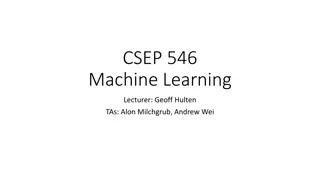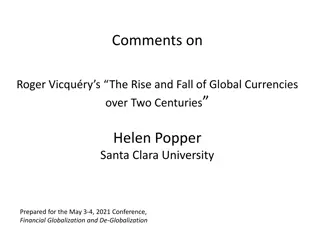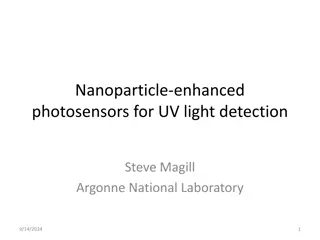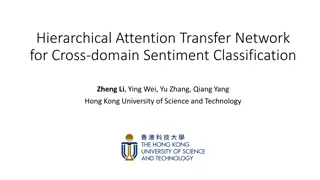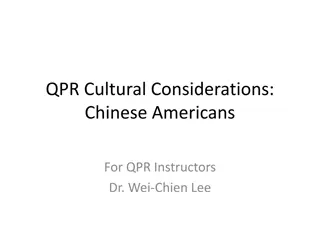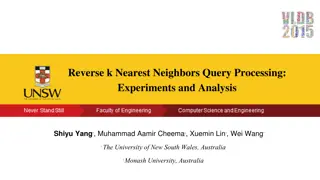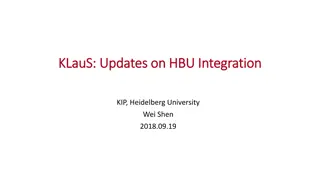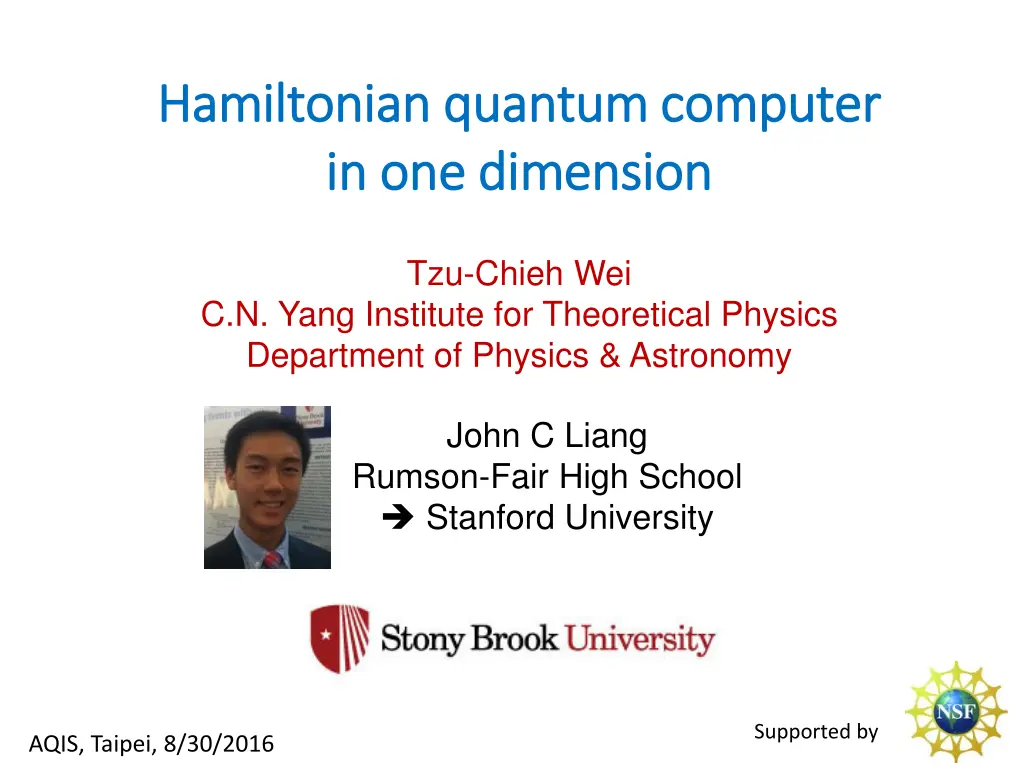
Hamiltonian Quantum Computer in 1D
Exploring the concept of Hamiltonian quantum computing in one dimension, focusing on constructions, simulations, and locality considerations. Discusses the application of Hamiltonians in quantum computation circuits and the challenges and possibilities of implementing such systems with different state constructions. Includes insights on qubit measurements, gate operations, and Hamiltonian-based quantum computing models.
Download Presentation

Please find below an Image/Link to download the presentation.
The content on the website is provided AS IS for your information and personal use only. It may not be sold, licensed, or shared on other websites without obtaining consent from the author. If you encounter any issues during the download, it is possible that the publisher has removed the file from their server.
You are allowed to download the files provided on this website for personal or commercial use, subject to the condition that they are used lawfully. All files are the property of their respective owners.
The content on the website is provided AS IS for your information and personal use only. It may not be sold, licensed, or shared on other websites without obtaining consent from the author.
E N D
Presentation Transcript
Hamiltonian quantum computer Hamiltonian quantum computer in one dimension in one dimension Tzu-Chieh Wei C.N. Yang Institute for Theoretical Physics Department of Physics & Astronomy John C Liang Rumson-Fair High School Stanford University Supported by AQIS, Taipei, 8/30/2016
Outline I. Introduction: Hamiltonian quantum computer II. 1D 3-local 5-state construction (not translation invariant) III. 1D 3-local 8-state construction (translation invariant) [will not have much time for this part] IV. Summary
Quantum computation: circuit Measurement n qubits (initialized) round R of gates round 2 round 1 3 steps: (1) Initialization, (2) Gate operations (3) Measurement Gates: a finite (universal) set of unitary transformations are sufficient 1-qubit gates: 2-qubit gate: Note 1-qubit gates are special case of 2-qubit gates:
Simulating circuit with Hamiltonian Measurement u v n qubits (initialized) round R of gates round 2 round 1 First Hamiltonian Quantum Computer by Feynman in 1984 Unary Clock: t=1: 00 .001, t=2: 00 .010, t=3: 00 .100 (using s to flip) Ai applies to pair (u,v) of qubits (e.g. from circuit) clock Each term is a 4-body (but not geometrically local) qubits u v
1D Hamiltonian Quantum Computer Can we do this with a one-dimensional Hamiltonian? (Feynman s not 1D) Yes: but requires large local dimension for short-ranged, e.g. nearest-neighbor: Vollbrecht & Cirac: translation invariant, 30-state Kay: translation invariant, 31-state Nagaj & Wocjan: translation invariant, (1) 10-state (2) 20-state Aharonov et al. has one construction that (can be interpreted in terms of Hamiltonian QC) is non-translation invariant with 9-state Chase & Landahl: non-translation invariant, 8-state
Locality k vs local dimension d 1D Local Hamiltonians (non-translationally invariant) Aharonov et al. 9 d Chase & Landahl ? 8 Local dimension 7 Not Universal 6 This work 5 4 Implied by Chase & Landahl 3 2 4 2 3 5 1 6 k Locality
Outline I. Introduction: Hamiltonian quantum computer II. 1D 3-local 5-state construction (not translation invariant) III. 1D 3-local 8-state construction (translation invariant) IV. Summary
Universal Circuit n qubits round R of gates round 2 round 1 How do we simulate such circuit on 1D chain? (How to modify Feynman s construction?) clock qubits u v Can we get rid of clock qubits? How to apply different gates on the same pair of qubits?
Simulate circuit with 1D chain n qubits round R of gates round 2 round 1 Solution inspired by 1D QMA LHP: (1) Replace clock by pattern of symbols (2) Each gate is applied at specific & distinct location [Aharonov, Gottesman, Irani & Kempe 09] Example: n=3 qubits, R=2 rounds (initial state shown) 2 gates in one round [applied between neighboring qubits] qubits need to be moved from block to block for next round of gates
Local Hilbert space & transition rules Two different types of sites: : two kinds of qubits A: 5-state : unborn/dead (1 dim) B: 5-state : spacer btwn qubits or unborn turn -around right/ left : movement & direction change Transition rules: 1 (backward): 1: 2: 6a: boundary 3: 6b: 4: NOT boundary 7a: 5a: 7b: 5b:
Transitions history states [w qubits properly initialized in 0 or 1] U1 U3 (initial state) U2 U4 6a 1: U1 1 U2 2: 1 2 3: 3 4: 4 5a: 5a 5b: 4 6a: 5a 4 6b: 5b 7a: 6b 7b:
Transitions history states U1 U3 U2 U4 6b 1: 7a 7b 2: 3 3: 4 4: 5a 5a: 5a 5b: 4 6a: 5b 6a 6b: U3 1 7a: U4 1 (final) 7b:
Computation at discrete time & history states U1 U3 U2 U4 Unique forward/backward transition (except at initial and final state) 6a U1 1 U2 Transition rules uniquely connect history states (of computation) 1 2 3 5a But isn t our computer run by continuous-time evolution? Hamiltonian? 4 5b 6a U3 1 U4 1
Transition rules 1 (backward): 1: 2: 6a: 3: 6b: 4: 7a: 5a: 7b: 5b: Yes, but can turn these rules into a Hamiltonian
Hamiltonian Constructed from the transition rules: In the basis of valid history (via transition rules): Effective Hamiltonian:
Run your Hamiltonian computer [@| + + + + .|O.O.O.O.O.|O.O.O.O.O.|O.O.O.O.O.|O.O.O.O.O.|O.O.O.O.O.] With qubits appropriately initialized (e.g. 00000) Quantum computation: evolve by Schrodinger equation via Hamiltonian Readout: measure in the computational basis Problems: But at what time t ? We want it to evolve to final state! Na ve counting: probability 1/T to land onto the final state!!
Raising probability to finish goal Trick: set your training goal higher pad a lot of identity gates I after desired rounds finished I II I I I I I desired goal training goal Then there is high probability of success in getting the correct outcome [.|O.O.O.O.O.|O.O.O.O.O.|O.O.O.O.O.|O.O. + + <|O+ + .O.O.|O.O.O.O.O.] Remaining gates are identity computation finished
Effective Hamiltonian: 1D quantum walk or tight-binding model has eigenvalues with eigenstates Starting at |0 , probability of arriving at |m after time
Analysis for success probability Starting at |0 , probability of arriving at |m after time Can show that [Nagaj & Wocjan, PRA 2008] Pad sufficient identity gates (e.g. 5 times as many) so that for m T/6, desired computation is done Readout: measure in the basis at random time B: A: e.g. [.|O.O.O.O.O.|O.O.O.O.O.|O.O.O.O.O.|O.O. + + <|O+ + .O.O.|O.O.O.O.O.] Take finite and high probability of success
So we have demonstrated a 1D 3-local 5-state (spin-2) Hamiltonian capable of universal QC Classical simulation of such spin-2 Hamiltonian is BQP-complete
What if translational invariance is imposed? 1D Local Hamiltonians (translationally invariant w.r.t. unit cells) 10 Nagaj & Wocjan ? 9 d 8 This work Local dimension 7 Not Universal 6 5 Implied by Nagaj & Wocjan 4 3 2 4 2 5 3 1 6 k Locality
Summary & open questions 1D 3-local 5-state (spin-2) Hamiltonian (not translationally invariant) universal for Hamiltonian quantum computation 1D 3-local 8-state (spin-7/2) Hamiltonian (translationally invariant) universal for Hamiltonian quantum computation Open: are the above results optimal? What about 1D 3-local QMA Hamiltonians? Minimum local dim?







